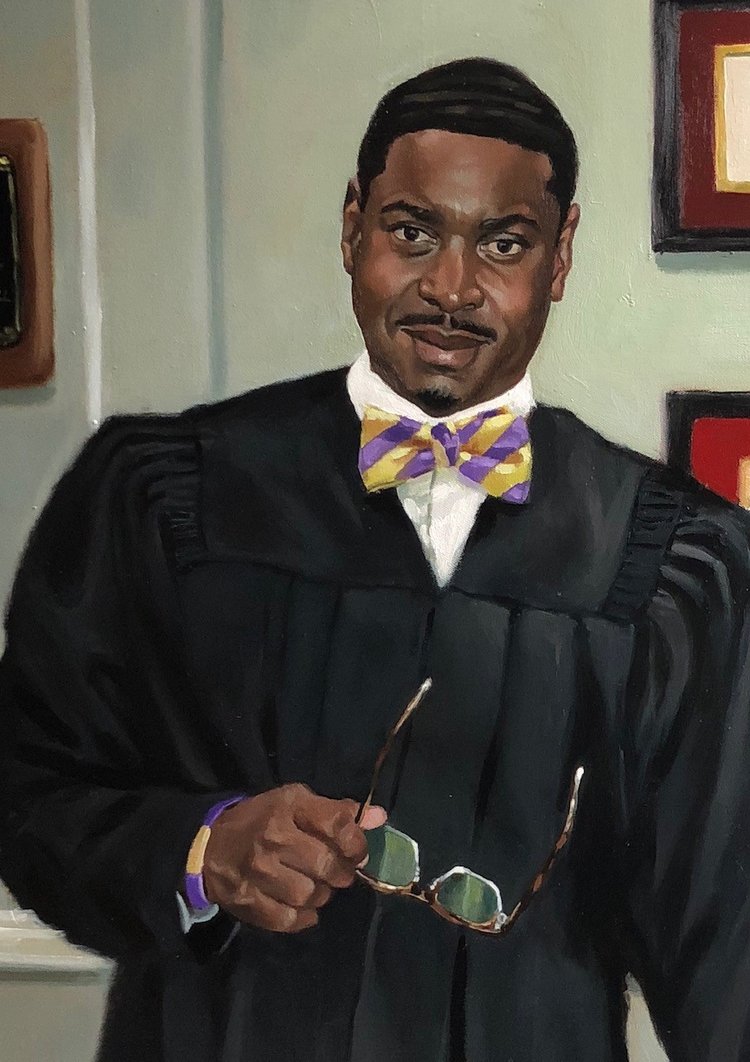Q&A – Not Enough Apologies: Trauma Stories
May 10, 2019 Leave a Comment
After addressing issues of gun violence in the 2016 documentary Too Many Candles, Wisconsin Public Television’s Frederica Freyberg wanted to tackle another issue that seemed too big to address in the same program.
Not Enough Apologies: Trauma Stories premieres 8 p.m Monday, May 13. and is available to watch online now.
The one-hour film, produced by Freyberg, explores the lasting effects of traumatic experiences, such as abuse and neglect, on children and adults. It also shares new responses to advocating for, and assisting, trauma victims. Throughout the film, trauma survivors share their stories in their own words.
Read on for an in-depth Q&A with Freyberg on how this sobering yet valuable project came to life.
WPT: What drove you to research these issues?
FREYBERG: Dane County Judge Everett Mitchell came on Here & Now a couple years ago. He hadn’t been on the bench very long, but he saw a trend in the juvenile justice system and was very concerned: children ending up in what he calls the “child welfare to adult prison pipeline.” He urged us to take a look.
He’s in a unique place to discuss these issues, particularly because of his personal background [as a survivor of abuse] and his obvious resilience. He speaks publicly about his story.
Read a Wisconsin Bar feature about Mitchell’s remarkable journey.
When he tells these kids “I am your reflection,” he wants them to see that they can reach the same heights that he has. He tries to really see the individual child before him, not just look at the crimes that they might be accused of.
What drove you to make it such a major project, as opposed to a series of reports?
Trauma is so basic, so important. It affects so many people.
It started with this nugget from Judge Mitchell, but we learned about all kinds of other things: foster care, what it’s like to be a child removed from their parental home. Then we learned about trauma informed care and how Wisconsin is regarded as a leader.
It’s not new; I don’t mean to suggest that people in these fields haven’t been attuned to this. Some agencies are becoming totally immersed, doing a 180 on their practices with this in mind.
The director of Health and Human Services in Waupaca County described taking his entire agency and making sure that all the people who worked there with him were onboard. If they weren’t, they could leave. That sounds harsh, but some just weren’t ready to change how they did things.
They have now integrated trauma informed care to the extent that it’s practiced amongst all of their employees.
Read how Waupaca County is sharing its approach internationally.
One tangible example – not discussed in the film – was fascinating. In the old days, CPS workers would come back after a day of knocking on families’ doors and potentially removing children: very intense and stressful work. They’d walk in and the finance department would say, “I really need your expense reports.” Now these same finance people know they need to give CPS folks space and time to recover and heal.
What touchpoints helped guide this project? Did it follow your original outline?
I embark on projects with an angle but not an agenda. It took a long time to understand – and I don’t begin to understand the entire juvenile justice system.
I want to thank the Dane County juvenile court for providing dozens of redacted records. I came to understand that these children [takes a breath] suffer a lot of trauma and abuse at the hands of the people who are supposed to love and care for them. A lot of mental health treatment was being provided.
I wanted to understand more about the physical and psychological and emotional bases for brain development, because the court records I read described so many of these children as having these difficult behaviors.
Then I wanted a tangible understanding of trauma informed care. It seems simple, but… children who put their head down in class, or stare at the blackboard: people around them begin to think that they’re being disrespectful. What’s a way to interact with those children that might be different from how they’re often treated?
We wanted to tell the stories of people engaging in trauma informed care all across the state: Milwaukee, the Menominee Nation and Waupaca, as well as Dane County.
Could you talk about the process of sharing survivors’ stories – particularly how you found and worked with them discussing such difficult topics?
One expert said she believed the most important thing was hearing from people with lived experience. We sought those people out through a combination of referrals and reaching out directly; we made the decision to interweave their stories through most of the chapters.
I worked closely with Elizabeth Hudson, who appears in the film as a trauma informed care expert and is now the former director of the Department of Health Services Office of Children’s Mental Health. She was very instrumental.
They told me about all three of the places we went – infant court in Milwaukee, Menominee School District and Waupaca County. Those places were very amenable to us covering them.
I asked attorneys in the Dane County State Public Defender’s office if they had clients that would like to speak with me. Tammy, another of the young women with lived experience, was one of Everett Mitchell’s first cases.
We’re really, really, really grateful to these people for being willing to do this. We worked very hard to try to be respectful. We feel as though, through sharing their stories, they can bring awareness to the issue of trauma and the healing from it.
How did you prepare for these interviews and not retraumatize them in the process?
We didn’t come in cold, but we had to be very mindful. You can’t just go, “Really? And then what happened when you were four?”
The very first person we interviewed, even before Judge Mitchell, was Tammy. As she came into our studio, these old metal studio doors went “Clank!” when they shut. You could see her body tense up. Later on, I asked her about it. She said, “It’s just like the detention center – the sound of that lock, and the blue cinderblocks.”
Lina [Soblyte, the documentary’s primary videographer and editor] said, “Even with our preparation, we didn’t know what we were walking into.” Some things were difficult to visualize; how do you show a girl who destroys things, and hurts people?
In the complexity of the moment, speaking with our interview subjects and survivors, it was sometimes difficult to know exactly where to take the stories. So I let them lead. If they didn’t tell me something, I decided they meant not to.
How were you able to bring in the story of the 16-year-old who appeared before Judge Mitchell in court, and the young woman in Arkansas?
Because the court gave us uncommon access to juvenile court – which is closed to the public – I waited to be able to cover a hearing to get an idea of what’s happening here. As I looked at getting permission from the parties involved in some of Judge Mitchell’s upcoming hearings, he said, “Can you come this afternoon? This is a case that you should see.”
[The film includes police footage from when the boy stole a car, emphasizing that he clearly committed a crime.] That’s the tension.
If you notice, there’s a man sitting on the bench next to Judge Mitchell. It’s Michael Johnson from the Boys & Girls Club. Judge Mitchell says that he sometimes likes to invite community members in to see, because that whole system is shrouded from public view. It’s secret.
It was horrifying, heartbreaking, but really instructive to see all the people involved: social workers, clinicians, judges… These children’s lives go on without anyone except for these workers seeing it.
The 16-year-old approved of us being there, but he did not want to do an interview. And he’s still in trouble. Not only did we make the choice to keep him anonymous [even though he was identified as an adult in another county’s court case], it was required. I had to get a court order to use information about him.
One part of the testimony describes him waiting for his mother to come get him from a placement, but she never showed up. To me, that stood out. That was so heartbreaking. So representative of everything in his life, according to what Judge Mitchell said. Even when Judge Mitchell removed him from juvenile prison, his family did not show up to take custody of him!
The young woman in Arkansas was in the system in Dane County; her lawyer in the state Public Defender’s office reached out to her parents. She was not removed from her biological parents; her trauma involved severe mental illness and her treatment in facilities.
After reporting on these issues, how do you think viewers might “switch the lens” even if they’re not professionals?
As you go about your daily life, consider that a person handing you your coffee – or anyone at all – might have lived a life that included significant adverse childhood experiences. Several people I talked with mentioned that.
Try to be KIND to people! That’s one of the things that I took away.
The other thing I took away was this idea that if a child or an adolescent or teen are exhibiting bad behavior, it may well be because of trauma. The question is: what is the response from the caregivers?
The Menominee teacher who recognized that a child was in distress, and they weren’t going to get the test results they needed… yes, it takes a lot more time. But if you don’t take time now, you’ll be taking time later.
There’s hope, but there’s also kind of a bleak outlook, with juveniles placed in distant states and fewer resources. Where can we go from here?
WisContext is doing a larger piece about that particular issue, because frankly this is a pretty broad brush. You could do hours of reporting on any one of these chapters that we presented.
I wouldn’t want to be too bleak about it. I’m still super interested in this idea of resilience. There are different ways to come by that. It seemed to me that there’s something in the people we interviewed that helps make them resilient – and something in the people around them.
It feels like… if Everett Mitchell can overcome? He IS a good reflection of them. As he describes it, he had one thing that got him through. When he was a teenager, he started preaching, and that gave him direction.
A lot of people in this field talk about slowing down, taking time. That is a common thread through people that address this: being at peace and balanced.
This doesn’t necessarily cost more money. It’s a paradigm shift. I asked the superintendent in the Menominee Indian School District, “How do you slow down and take so much time and still do what you need to do?” Again, his response is, “That’s all we have is time.”
Anything else you’d like to add?
I’ve compartmentalized for so many months, because that’s the only way I’ve been able to do this.
Lina was extraordinarily sensitive and caring and thoughtful and pushed me to do some things that I might not have done – pushed harder to find out more, or to describe certain things in a way that she wanted to understand it more.
Then she worked amazingly hard, not just shooting it but editing it. The soundtrack is amazing; so much of the emotion comes from the imagery and transitions.
It was the hardest project I’ve ever done. Each new one seems harder, but this was really it.
Frederica Freyberg PBS Wisconsin Documentaries Here & Now Wisconsin Public Television News and Public Affairs
 Passport
Passport








Barbara Munson says:
Powerful!
Steve Bose says:
Let me start again. Have a grandson in Dane County. He is currently 15. He has been in our home twice since age 11, in a residential treatment Facility (St. A’s in Milwaukee, Winnebago several occasions, Meriter Mental Health several occasions, Dane County JRC several occasions, temporary foster home, each time being placed back in the parental home. Outside placements seemed to show behavioral improvement, and subsequent placement at home resulted in behavioral degradation. He is currently in a Foster home and recently removed from school. Would like more info on how to help him. Current system is not in his best interests.
I understand the desire to reunite families, but not in this case. I am concerned about siblings in the home. Would like to see some serious help for him, his parents and his siblings my other grandchildren